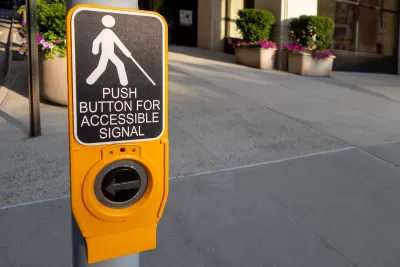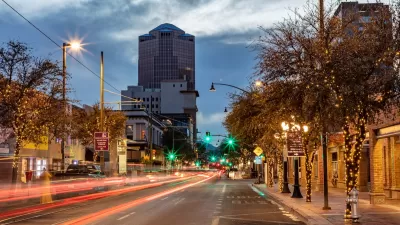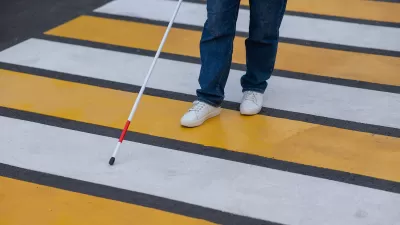Some critics of car-free zones call them exclusionary to people with disabilities, but other experts argue that, when properly planned, pedestrian enhancements improve safety and accessibility for everyone.

In a piece for Mother Jones, Julia Métraux explains how accessibility is being used as a “political football” to push back against car-free zones and other pedestrian infrastructure that some say harms mobility for disabled people. “Opponents of such initiatives have called them ‘exclusionary,’ ‘not progressive or inclusive,’ and bound to ‘hurt people with disabilities,’ pointing out that many disabled people simply need cars to get around.”
Yet disabled people are more likely not to drive, and car-heavy cities are more dangerous to disabled people, says expert Anna Zivarts. “A 2015 study by Georgetown University researchers found that the rate of vehicle-pedestrian deaths among wheelchair users was 36% higher than that of the overall population.”
Even when accessibility is an issue, it’s often easily solved. “In 2022, when San Francisco’s Golden Gate Park permanently closed a major boulevard to cars, opponents, including city Supervisor Connie Chan, said it was disabled and aging folks who would pay the price. But free shuttles, accessible to anyone, now bridge the gap.”
San Francisco also maintains a dialogue with disabled residents to ensure its programs serve them. When the city was evaluating its scooter sharing program, feedback from a group of students with disabilities helped the city opt for scooters with backrests and larger wheels for stability to ensure more people can ride them.
FULL STORY: Do Car-Free Zones Hurt Disabled People? Experts Explain.

Manufactured Crisis: Losing the Nation’s Largest Source of Unsubsidized Affordable Housing
Manufactured housing communities have long been an affordable housing option for millions of people living in the U.S., but that affordability is disappearing rapidly. How did we get here?

Americans May Be Stuck — But Why?
Americans are moving a lot less than they once did, and that is a problem. While Yoni Applebaum, in his highly-publicized article Stuck, gets the reasons badly wrong, it's still important to ask: why are we moving so much less than before?

Research Shows More Roads = More Driving
A national study shows, once again, that increasing road supply induces additional vehicle travel, particularly over the long run.

Judge Halts Enforcement of Anti-Homeless Laws in Grants Pass
The Oregon city will be barred from enforcing two ordinances that prosecute unhoused residents until it increases capacity and accessibility at designated camping sites.

Advancing Sustainability in Los Angeles County Schools
The Los Angeles County Office of Education’s Green Schools Symposium brings together educators, students, and experts to advance sustainability in schools through innovative design, climate resilience strategies, and collaborative learning.

Using Old Oil and Gas Wells for Green Energy Storage
Penn State researchers have found that repurposing abandoned oil and gas wells for geothermal-assisted compressed-air energy storage can boost efficiency, reduce environmental risks, and support clean energy and job transitions.
Urban Design for Planners 1: Software Tools
This six-course series explores essential urban design concepts using open source software and equips planners with the tools they need to participate fully in the urban design process.
Planning for Universal Design
Learn the tools for implementing Universal Design in planning regulations.
City of Moreno Valley
Institute for Housing and Urban Development Studies (IHS)
City of Grandview
Harvard GSD Executive Education
NYU Wagner Graduate School of Public Service
City of Cambridge, Maryland
Newport County Development Council: Connect Greater Newport




























